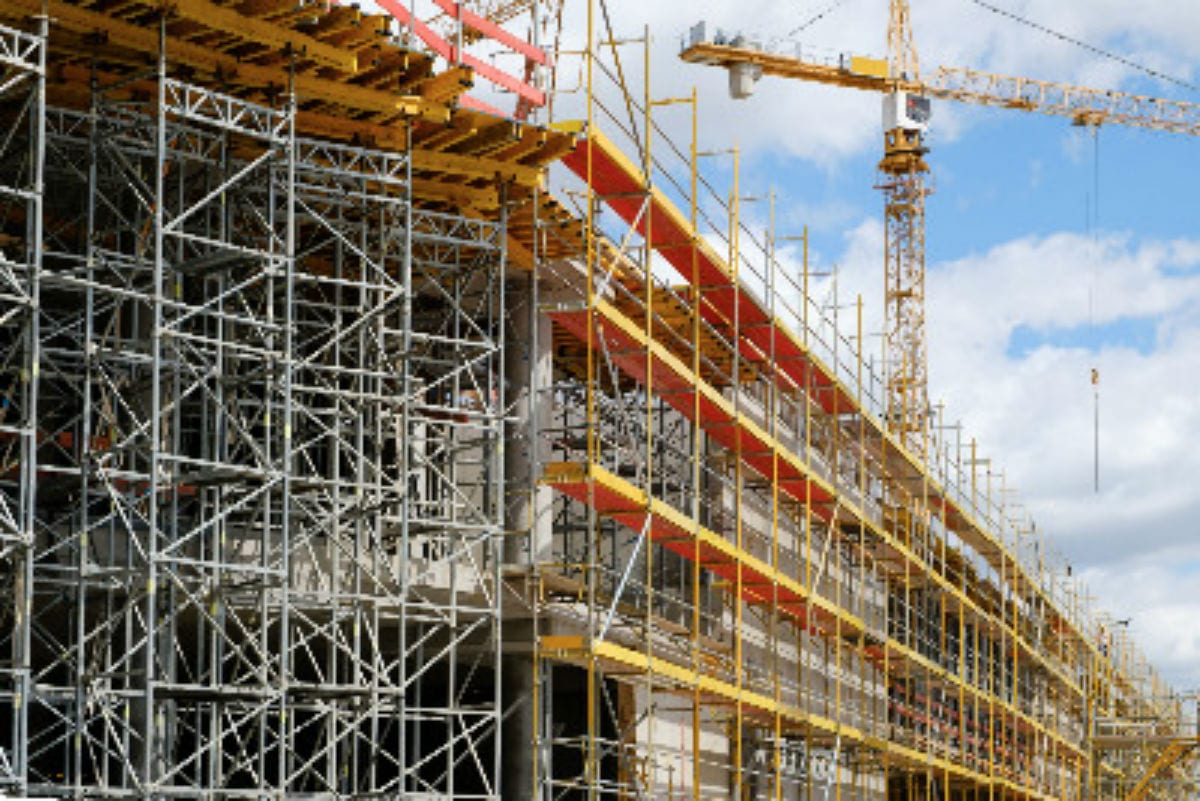In the world of building, scaffolding serves as the support that sustains not just the tangible structure but also the safety and performance of the initiative itself. With projects continue to grow in intricacy and extent, understanding the details of scaffolding systems is vital for builders, project leads, and safety coordinators alike. From skyscraper buildings to busy retail spaces, the proper scaffold can mean the distinction between a victorious project and a pricey setback.
Business scaffolding is not just about offering access; it’s about establishing a protected environment for workers and ensuring that projects adhere to protection regulations. In this article, we will examine the multiple types of scaffolding used in commercial projects, talk about how proper system selection enhances site safety, and discuss the critical aspects of scaffold approvals and compliance with Occupational Safety and Health Administration regulations. Whether you're organizing a large construction site or a simple renovation, understanding these elements will equip you to make educated decisions and foster a more secure working environment for everyone involved.
Types of Commercial Scaffolding
Scaffolding used in commercial settings comes in various types, tailored to meet specific project requirements and site conditions. The primary forms include supported scaffolding, which consists of platforms held up with brackets, poles, or frames. This type is best suited for low to mid-rise structures and is often used for activities such as painting and plastering. An additional common type is scaffolding that is suspended, which is supported by a roof or building structure, making it suitable for high-rise construction and maintenance tasks, including window cleaning and facade work.
System scaffolding is another popular choice in commercial projects, thanks to its modularity and versatility. It includes pre-engineered components that facilitate quick assembly and disassembly, which is why contractors favor contractors who require adaptable solutions in their scaffolding setups. This type is particularly effective for complex designs, as it can be adapted to different layouts and heights. By using system scaffolding, construction teams can efficiently tackle a variety of tasks, ranging from residential renovations to large-scale commercial builds.
Finally, there is lightweight scaffolding made from aluminum, known for its durable and lightweight nature. This type of scaffolding is preferred for jobs that require high mobility and frequent movement, as it can easily be moved and set up by a limited team. Aluminum scaffolding is particularly useful in situations where space is limited, or where rapid assembly is essential. Its advantages make it a smart choice for commercial projects, ensuring that work can continue without interruption while upholding safety standards and regulations on the job site.
Security and Compliance in Scaffolding Structures
Maintaining protection and adherence in scaffolding structures is essential for protecting personnel and the public during construction activities. Compliance with OSHA regulations is not just a legal obligation but a fundamental aspect of maintaining a secure work environment. These regulations outline the essential safety measures that scaffolding must meet, such as weight capacity, necessary safety rails, and adequate instruction for employees. By complying with these protocols, construction companies can substantially reduce the chance of mishaps and harm on construction sites.
In furthermore regulatory adherence, a strong safety culture within the scaffolding crew is crucial. This culture includes regular safety training sessions, continuous education, and clear communication about possible hazards. Making sure that all team members understand the machinery and processes not only boosts their protection but also fosters a shared responsibility for ensuring a secure work environment. A adequately trained crew is better equipped to identify hazards, carry out safety checks, and respond adequately in emergency situations.
In conclusion, regular inspections and upkeep of scaffolding equipment play a crucial role in adherence and safety. Conducting thorough safety inspections before, during, and after scaffolding setup helps identify and correct potential concerns, ensuring that the machinery is in ideal condition. By implementing a regular inspection checklist, scaffolding companies can lessen dangers and make sure that their scaffolding comply with safety regulations. This proactive approach to protection and adherence finally contributes to the efficient completion of tasks and the safety of all workers involved.
Benefits of Expert Scaffolding Services

Utilizing professional scaffolding services brings a dimension of skill that is vital for the success of any construction project. Experienced scaffolders understand the details of diverse scaffolding systems and can choose the most suitable option based on site requirements. Their understanding ensures that the scaffolding is not only effective but also aligns with safety regulations and standards, reducing the risk of incidents and holdups.
In addition to expertise, professional scaffolding services deliver effectiveness that can significantly streamline construction deadlines. blog are proficient in installing and dismantling scaffolding quickly and safely, which allows construction teams to dedicate themselves on their core tasks. This efficiency is especially crucial on active commercial sites where time is money, and any delays can have major financial implications.
Lastly, opting for a qualified scaffolding company can provide assurance, as they often carry insurance and warranties that protect both the workers and the safety of the project. This degree of assurance is essential, as it can mitigate costly risks associated with mishaps or failures. Overall, qualified scaffolding services create a safe, streamlined, and compliant environment that enhances the overall effectiveness of engineering ventures.
